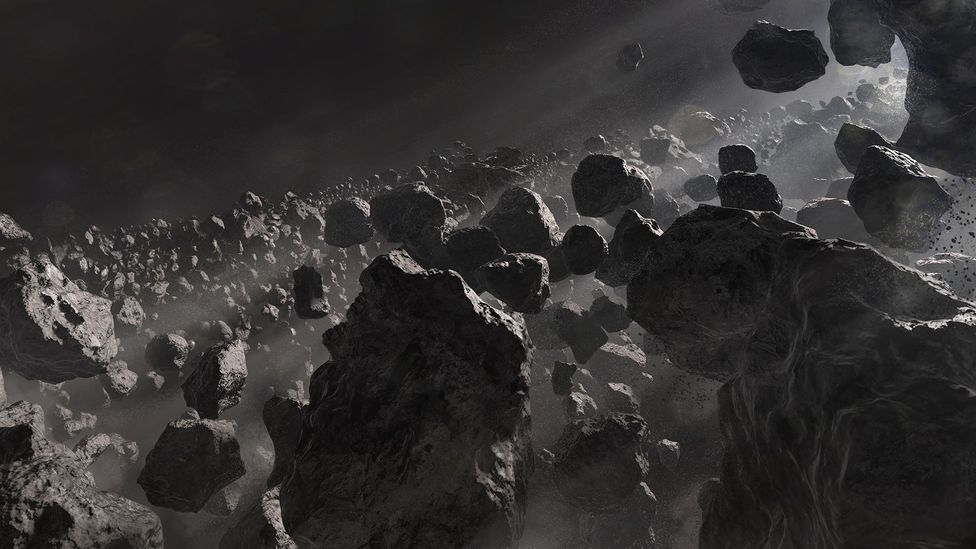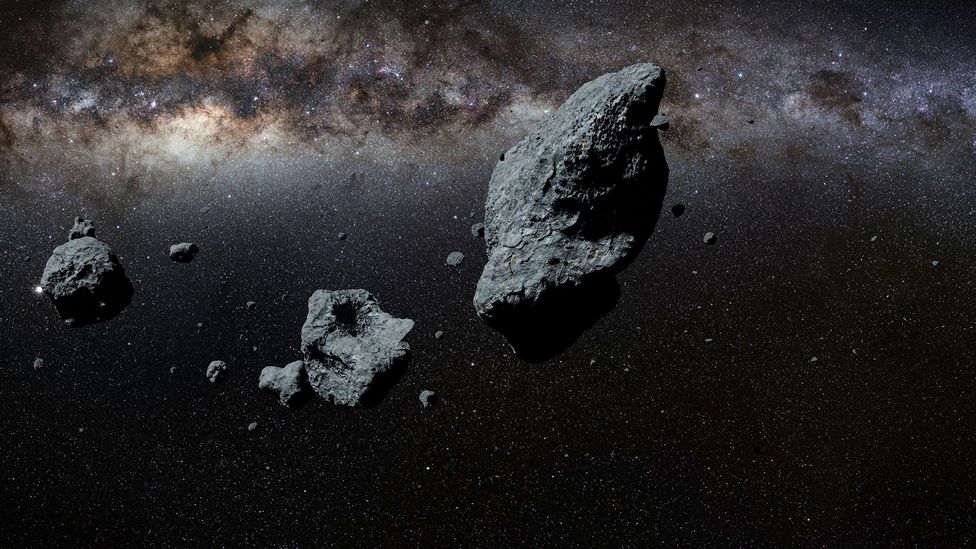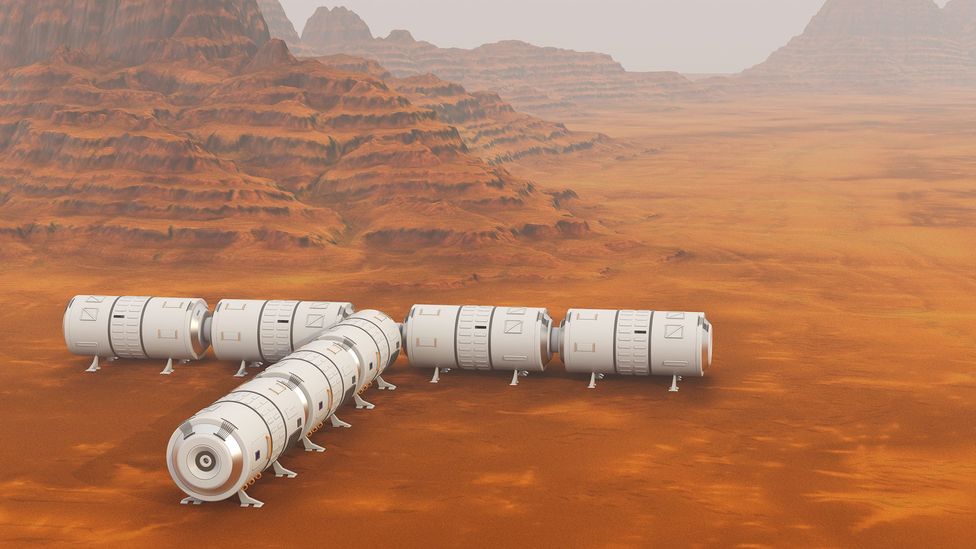Game Where You Must Survive in a World Which Was Hit by an Asteroid
How we could survive on an angular
(Image credit:
Getty images
)

The star-shaped belt is gilded with artful metals. There are already plans for star-shaped mining but could we ever build a colony on one?
T
The science-fiction series The Expanse is set 200 geezerhood in the incoming: humans have naturalized colonies on the Moon and Mars, and birth begun colonising the asteroid belt.
There are compelling reasons wherefore we might wish to colonize the asteroid belt, but the predominant one is mining. Unequal the Earth, where precious metals tend to be buried hole-and-corner, there is an abundance of metals alike gold and palladium on the surface of asteroids. But they could also represent used as a knowledge base research outpost.
The Star-shaped Belt orbits the Sun betwixt Mars and Jupiter, and is thought to be the remains of a planet. Patc the Asteroid Belt is the main source of asteroids, asteroids can be constitute throughout the Solar System and come in three elementary types; flinty, carbonaceous and metallic. They range in size from hundreds of metres to the size up of a flyspeck house.
You might also like:
- How posterior we avoid extinction by asteroid?
- The challenge of catching a floating asteroid
- How we could stop a doomsday asteroid
Companies same Planetary Resources and Deep Space Industries are already investing in asteroid mining and they could begin descent by 2025. Nonetheless, creating a settlement on an asteroid is furthest more complicated than simply mining one.

The ISS is less than 200 miles from Earth; the asteroid belt is many millions of miles away (Quotation: Alamy)
I of the briny challenges will be the amount of radiation hit the colonies. In that location will be star radiation, Jupiter's radiation sickness belt and more from cosmic rays. "Cosmic rays are higher vigour particles, mostly evenhanded protons operating theater high-vim nuclei. They zip straight through you and do bad things to you," explains Martin Elvis of the Harvard-Smithsonian Centre for Astrophysics. On Earth, our air absorbs the just about dangerous rays, and a distance colony would require a corresponding shield. "A thickheaded layer of water or glass could live put-upon [for protection], merely it would have to be some metres thick."
Too as radiation, long exposure to zero or little-gravity is detrimental to the human body. "Astronauts on the ISS have to exercise for two hours every Clarence Day with electric resistance machines and still finish up with health problems from living in zero gravity for such a long time," says astrophysicist Katie Mack, an assistant professor at North Carolina Land University. Any long-run asteroid settlement would deman some form of artificial gravity to mitigate this effect – possibly past spinning the entire structure.
Information technology would also need some form of power genesis. Most probes and satellites depend on solar arrays for power, but this may non constitute as operative for an angulate Colony. "As you move further from the Sunday, you have the 'Inverse Square Law' coming into effect. If you are twice Eastern Samoa far from the Sun, so you have a one-fourth of the energy coming in from a given area of solar aggregation panels," says science-fiction author and quondam astronomer Alastair Sir Joshua Reynolds. Aside the time you get beyond the area of Mars and into Jupiter and Saturn territory then you have to build very large aggregation areas to utilise solar power, only I do not see that equally being a major problem."
The ideal typecast of asteroid to ensconce would be carbonaceous, every bit these are often 10% water. "Water is bad common in space, as it is [made] of the most common elements in the universe," says Elvis. "Irrigate can also be broken down into oxygen and atomic number 1, allowing you to breathe the atomic number 8." The asteroid would also need to be at to the lowest degree 100 metres in thickness, to provide enough protection from radiation therapy.
Settlements could be buried low-level the surface of an asteroid, which would supply radiation shielding. However, mining and excavating an asteroid is harder than it seems. "A lot of what we think of every bit asteroids are real broadly organised rubble piles that do not birth any intrinsic structural integrity – they are not giant boulders," explains Reynolds. "They are more just vast blobs or gravel held together away their own gravity."

Unrivalled star downside of asteroid is that they have zero-gravity - something that is damaging to human health long (Credit: Getty Images)
This lack of material coherency will too awful that any attempts to spin the angular – to artificially generate gravity within the asteroid – would subject it to additional forces and risk it disintegrating. Consequently, some mechanism to improve the angular's durability testament represent mandatory. "You would have to empty it out without messing the structural integrity and then spin it up whilst qualification sure that twist does not set up too much stress along the remaining structure," says Mack.
Incomparable suggestion is to produce a metal mesh or coop surrounding the asteroid to prevent it disintegrating. This is not as prohibitive as it may first seem, as the star-shaped belt has an abundance of gold asteroids with the necessary materials which could be used.
Many of the challenges facing asteroid settlements are similar to those of the proposed lunar base. Isolated from sobriety, the alone other senior departure is distance. The Moon and the ISS are comparatively near. The Moon is only a mere 225,623 miles (361,000km) away at its closest point, and the ISS is just exclusive the Earth's atmosphere. On the other hand, the star-shaped belt is approximately 160 million miles (256 million km) away.
Whatsoever asteroid settlement would need to embody a closed eco-system, and individual-sustaining, as patronise from Earth will be extremely limited. "It could take months to get there and back, so if you have an emergency brake, you will have to mess with it on the star-shaped. You will need an awful lot of people, you do not just date there and have a [Asterisk Trek] replicator," says Elvis. Even sending a subject matter to Earth could take an hour.

Edifice a colony on an angular would be farthest more challenging than building one on Mars (Credit: Getty Images)
Construction a settlement on an asteroid appears to be technically feasible but carries with it significant engineering challenges. Instead, it is far more possible that asteroids could be strip-mined remotely aside automated systems and drones. An pick to support this could be to form a base on Mars, which could be used for coordinative the star-shaped mining systems.
"Both Mars and the Moon are more hospitable in price of the gravity, as well as radiation shielding by using existing underground tunnels," says Macintosh. There are already half a dozen satellites you can use for communication theory and the environment has been carefully affected.
There are about asteroids that travel in elliptical orbits around the Sun, with their path coming close to Earth and Mars. These could exist hollowed outgoing and used as a form of transport, while protecting astronauts from radiation and reducing the need for fuel. "We already know of a dozen or more than asteroids that already would be gentle to nudge into these orbits with expected technologies a few old age from now," says Elvis.
On that point is also a proposal to build a spaceport happening Phobos, which is a moon of Red Planet, and is thoughtful by more or less to have once been an asteroid. This spaceport could be used a stepping-off full stop for later settling on Mars.
Whilst planets are the preferred location for manned bases, collectable to their gravity and atmospheric protection, we could all right colonise an asteroid. However, they would not be in particular comfortable places to live. The benefits will have to far outweigh the daunting challenges.
--
Join 800,000+ Future day fans by liking us connected Facebook , OR follow us connected Twitter .
If you liked this story, sign up for the each week bbc.com features newssheet , titled "If You Only when Read 6 Things This Week". A handpicked pick of stories from BBC Future, Dry land, Culture, Primary, and Travel, delivered to your inbox every Friday.
Game Where You Must Survive in a World Which Was Hit by an Asteroid
Source: https://www.bbc.com/future/article/20180612-will-we-ever-colonise-an-asteroid
0 Response to "Game Where You Must Survive in a World Which Was Hit by an Asteroid"
إرسال تعليق